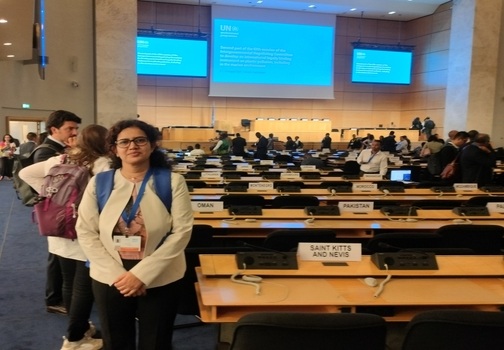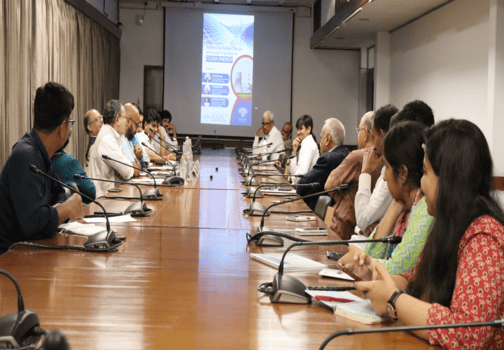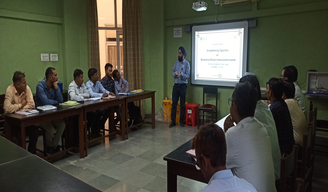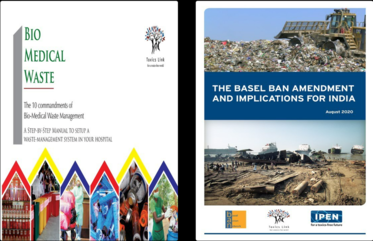E-waste Management
GOVERNMENT OF INDIA
MINISTRY OF ENVIRONMENT, FORESTS AND CLIMATE CHANGE
LOK SABHA
UNSTARRED QUESTION NO: 2458
ANSWERED ON: 13.12.2021
E-waste Management
Aparajita Sarangi
Will the Minister of ENVIRONMENT, FORESTS AND CLIMATE CHANGE be pleased to state:-
(a) the details for the e-waste management framework in the country along with its State-wise compliance;
(b) whether the Government has offered any incentives for offices/companies/residential societies/other like organizations for management of e-waste and its responsible disposal and if so, the details thereof;
(c) the details of the number of recycling plants installed in each State for e-waste and the quantum of e-waste processed; and
(d) whether the Government has conducted a study to identify the quantum of e-waste generated by each State, contributors to the e-waste, types of electronics that largely comprise e-waste, and environmental hazards posed by e-waste and if so, the details thereof?
ANSWER
MINISTER OF STATE IN THE MINISTRY OF ENVIRONMENT, FOREST AND CLIMATE CHANGE
(SHRI ASHWINI KUMAR CHOUBEY)
(a) The management of e-waste is being carried out under the frame work of E-Waste (Management) Rules, 2016 and amendments there off. The Rules, are effective from 01.10.2016. The rules provide for followings:
- Applicable to every manufacturer, producer, consumer, bulk consumer, collection centres, dealers, e-retailer, refurbisher, dismantler and recycler involved in manufacture, sale, transfer, purchase, collection, storage and processing of e-waste or electrical and electronic equipment listed in Schedule I, including their components, consumables, parts and spares which make the product operational.
- Extended Producer Responsibility (EPR) forProducers of notified electrical and electronic equipment (EEE). Under EPR responsibility of producers extend beyond consumer stage of its product for collection, storage, transportation and environmentally sound dismantling and recycling and for creating awareness among consumers.
iii. Instrument of EPR Authorization(EPRA) for producer for managing their EPR
- Annual E-Waste collection targets to Producers based on the generation from the previously sold EEE or based on sales of EEE as the case may be, the collection targets as notified is given at Annexure – I.
- Environmentally Safe & Sound Collection, Transportation, Storage and Dismantling and Recycling only through authorized dismantlers and recyclers.
- List of twenty-one (21) EEE under two categories namely ‘information technology and telecommunication equipment’ and ‘consumer electrical and electronics equipment’ which becomes e-waste at the end of its useful life when discarded by its users for dismantling and recycling.
Compliance Status of E-Waste (Management) Rules, 2016 are as under:
? There are 1917 Producers having Extended Producer Responsibility Authorisation (EPRA) under the Rules. The States/Union territories (UTs) wise list of EPR Authorised Producers is at Annexure – II.
? There are 468 authorised Dismantlers/Recyclers in 22 States having processing capacity of 13,85,932.22tonnes. The States/ UTs wise list of authorised dismantlers/recyclers is at Annexure – III.
? There are 2808 collection centres/ points in the country. The States/UTs wise list is given at Annexure – IV.
? The quantity of e-waste collected and processed during Financial Year (FY) 2019-20 and FY 2020-21 is 2,24,041.00 tonnes and 3,54,540.7 tonnes respectively.The States/UTs wise details are at Annexure – V.
? There are 68Registered Producer Responsibility Organisation (PRO) in the country.
(b) Government has not offered any direct incentives for offices/companies/residential societies/ other like organizations for management of e-waste and its responsible disposal, however there has been provided disincentive for non-compliance of e-waste rules for responsible disposal.
(c) There are 468 authorised Dismantlers/Recyclers in 22 States/UTs having processing capacity of 13,85,932.22tonnes. The States/ UTs wise list of authorised dismantlers/recyclers is at Annexure – III. The quantity of e-waste collected and processed during FY 2019-20 and FY 2020-21 is 2,24,041.00 tonnes and 3,54,540.7 tonnes respectively.The States/UTs wise details are at Annexure – V.
(d) Under the E-Waste (Management) Rules, 2016, twenty-one (21) types of EEE has been notified. These notified EEE at the end of their life becomes E-Waste. The input data for estimation of generation of e-waste is available only from FY 2017 – 18 and for national level generation only. Information on national level e-waste generation is available financial year wise for the financial year 2017-18, 2018-19 and 2019-20 and is given in the table below:
S.No. Financial Year Generation (Tonnes)
- 2017-2018 7,08,445
- 2018-2019 7,71,215
- 2019-2020 10,14,961.2
E-waste contains precious and semi-precious materials such as ‘silver, gold, platinum, palladium and plastics, iron, glass, aluminium, and copper etc.’. It also contains hazardous and toxic substances such as ‘lead, cadmium, mercury, polychlorinated bi-phenyls (PCBs), etched chemicals, brominated flame retardants (BFR), arsenic, asbestos and nickel etc.’
The EEE after their useful life when they become E-Waste, may not cause any harm to health and environment if it is stored safely. However, if un-scientific and crude methods are used for processing for retrieval of useful components or material or if the material is disposed in open, then it may cause health risks and damage to environment.






